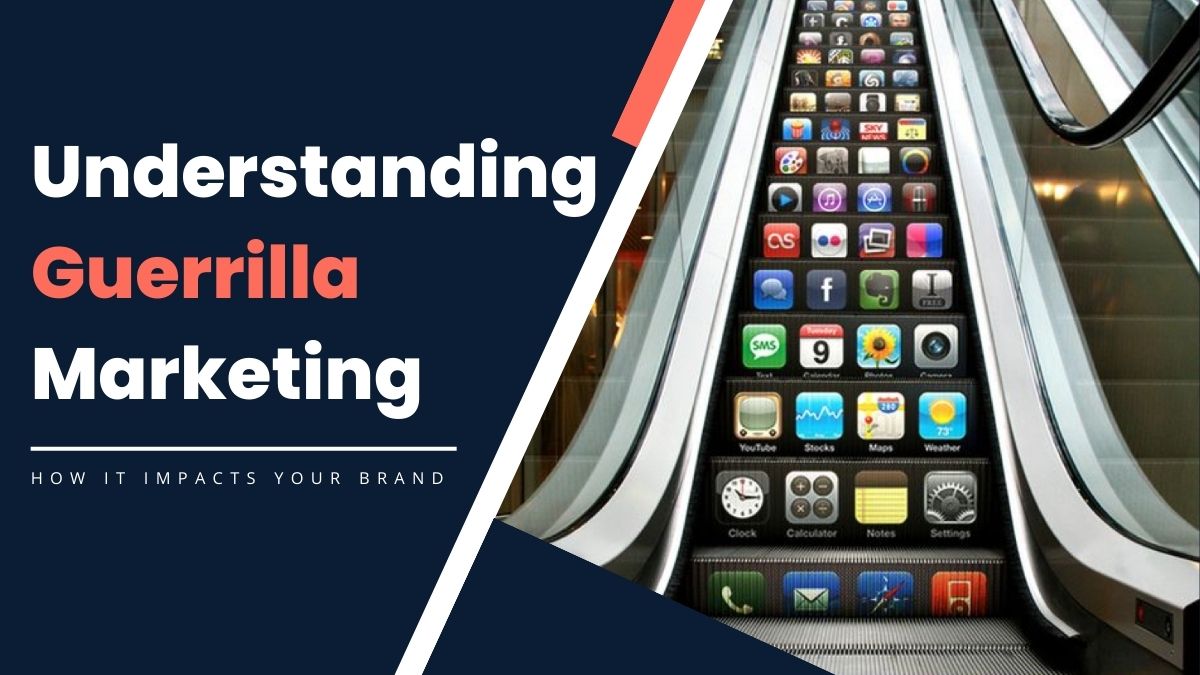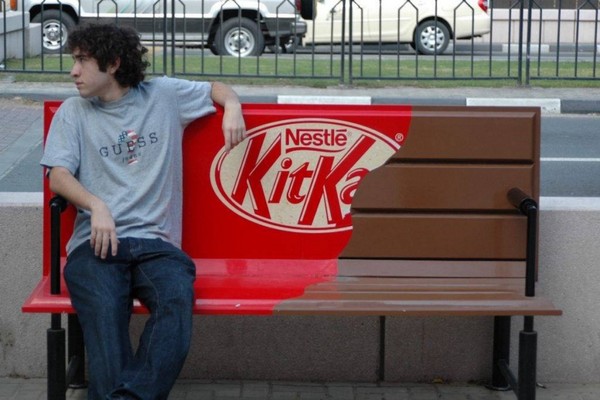Standing out in today’s fast-paced, cutthroat economy is more challenging than ever. So, how do successful businesses capture attention and keep it?
A successful brand strategy holds the key. Whether you’re a startup or an established firm, having an impressive brand requires generating trust, developing long-term consumer connections, and driving growth.
In this blog post, we’ll take a look at how to build a brand that not only stands out but also delivers concrete results.
What is a Brand Strategy?
Brand strategy is the process of determining how public views your company’s image, as well as the values and messages associated with it. Branding is more than simply a logo or a phrase, it is the whole perception of your company. As a result, it involves developing a solid brand image and establishing your brand as a market leader.

It is basically a long-term strategy designed to achieve specific goals that will eventually lead to people recognizing and preferring your brand. It can often be implemented through digital marketing services like social media, SEO, and content marketing to reinforce your brand’s message. This integration ensures that your brand remains relevant and top-of-mind, driving long-term success.
Ultimately, a solid brand strategy helps your business stand out in competitive markets, encouraging customers to choose and stay loyal to your brand.
Key Elements of Brand Strategy
To create a powerful brand, you need to focus on several key components:

- Brand Vision and Purpose: A company’s brand vision is its long-term ambition, which defines its future goals. Brand mission describes the core reason for its existence, highlighting its worth to customers and society beyond profit.
- Brand Identity: It describes your company’s visual representation, which includes your logo, color palette, typography, and imagery. Creating a visual connection between your brand and your intended audience makes your firm instantly recognizable and remembered.
- Target Audience: Your target audience comprises individuals most likely to interact with your brand, making them critical to your brand strategy. Understanding their beliefs, identities, and preferences is essential for developing a plan that will appeal to them.
- Brand Positioning: Brand positioning establishes your company’s unique selling point (USP) and makes it stand out from the competition. It’s the exceptional place the brand has in the minds of the people who are its intended target market. Utilize social media, your website, and other marketing channels to position your brand.
- Brand Values: A company’s brand values are essential for building trust and loyalty among customers. These core principles and beliefs shape the company’s identity, culture, and customer relationships.
- Brand Story and Voice: A brand story describes a company’s journey, goal, and values. A brand voice represents the company’s personality, tone, and communication style, resulting in a unique connection with the audience.
Also Read: Top 10 Digital Marketing Agencies in the USA 2024
Steps to Create an Effective Brand Strategy
Creating a strong brand strategy is essential for businesses to stand out in today’s competitive market.
Here are the key steps involved:
Set your Brand’s Goals and Objectives
The first step towards developing an effective brand strategy is clearly defining goals and objectives. These objectives will help you focus your branding efforts and track your success.
- Determine your company’s short- and long-term objectives.
- Set SMART goals (specific, measurable, achievable, relevant, and time-bound) for your brand.
- Create performance metrics to evaluate the efficiency of your branding activities.
- Create customer-centric goals that relate to the requirements and preferences of your target audience.
- Communicate your branding objectives and strategies with all relevant team members.
- Regularly review branding goals to track progress and adjust as needed.
Conduct Thorough Market Research
Carrying out in-depth market research gives significant insights into your target audience, industry trends, and competitive environment, allowing you to make informed decisions.
Here are the key areas to focus on:
- Determine your ideal customers, considering their demographics, psychographics, and behavior.
- Study the latest trends and advancements in your sector.
- Evaluate your top competitor’s branding, marketing methods, and market positioning.
- To acquire thorough data, combine qualitative and quantitative research methodologies.
- Conduct SWOT analysis and customer feedback.
- Convert the results of your study into valuable information that will help shape your brand strategy.
Craft a Compelling Brand Story
Creating an exceptional brand storyline is essential for emotionally engaging your target audience and setting your business apart from competitors. It also makes a long-lasting connection with your potential clients.

The following is an illustrated approach to writing an engaging brand story:
- Share your brand’s origin story, stressing its inspiration, difficulties, and goals to establish an emotional link with your audience.
- Highlight significant turning points and accomplishments in the development of your brand.
- Add testimonials and success stories from happy customers.
- Use captivating visuals, such as images, videos, or infographics, to strengthen your brand’s story.
- Highlight what makes your company unique and superior to competitors with a distinctive USP.
Design a Strong Brand Identity
Developing an integrated visual and verbal representation of your business is essential to designing a powerful brand identity. It helps you stand out in the marketplace and create a lasting impression on your audience.
Here’s how you can create impactful brand identity:
- Design a simple, versatile logo that reflects your brand’s values and works well across all mediums to boost recognition.
- Select colors that reflect the intended sentiments and the essence of your brand.
- Select fonts that match your brand’s voice and style, ensuring they are easy to read, even in small sizes.
- Use images that align with your brand’s personality and messaging.
- Avoid clutter and excessive complexity in your design.
Establish Your Brand Voice and Consistent Brand Messaging
Your brand voice is the personality and tone of your brand. Additionally, constant brand messaging guarantees that your message is communicated clearly and efficiently across all channels. It reduces misunderstanding and improves your brand’s credibility.
Here’s how to establish a clear brand voice and maintain consistent messaging:
- Create a guide detailing your brand’s tone, style, and word choice for consistent messaging.
- Define your brand’s personality through values and a fictional character.
- Incorporating your brand voice into social media marketing ensures consistent messaging and audience resonance.
- Develop brand guidelines, train your team, and regularly review messaging to maintain consistency.
- Monitor social media, gather feedback, and adapt your brand voice based on audience responses.
According to Forbes, 86% of consumers prefer an authentic brand image and honest personality. This is especially true when it comes to social media driving digital trends and changing how we look at brands in the future.
Build a Seamless Brand Experience
An impeccable brand experience is crucial to boosting customer loyalty and support. It includes offering a uniform and positive experience with your brand across all touchpoints.
Here’s how you create an effortless brand experience:
- Map out the customer journey from awareness to post-purchase and identify potential pain points.
- Prioritize customer service by providing timely help, empowering your staff, and personalizing conversations.
- Ensure top quality by implementing robust quality control measures for your products or services.
- Collect feedback and monitor social media to make required improvements to enhance the brand experience.
Monitor and Evolve
Once you’ve established your brand strategy, you need to regularly evaluate and adjust it to ensure its success. This helps in staying relevant and competitive in the market.
Here’s how you can ensure your brand grows and adapts over time:
- Use key performance indicators (KPIs) like brand recognition, client satisfaction, and engagement rates to measure your brand’s performance.
- Make informed decisions by utilizing information from web analytics and consumer interactions.
- Adapt to changing customer needs.
- As your business grows, refine your brand messaging to reflect new developments.
- Based on frequent brand audits, evaluate brand health, identify possibilities, and make needed adjustments.
How a Strong Brand Strategy Can Boost Your Business’s Success?
A successful brand strategy is an investment in your company’s future. By concentrating on creating a recognized, respected, and beloved brand, you can position your company for a lifetime of achievement.
- Customers can quickly recall a brand that is distinctive and memorable.
- Repeat business and recommendations from loyal customers help your company grow.
- Becoming widely recognized for a brand improves credibility and trust.
- A strong brand drives sales by attracting and retaining customers.
- A unique brand sets you apart from competitors.
- Top talent seeking a renowned and successful firm is drawn to powerful brands.
- A well-crafted brand strategy cultivates lasting connections with customers and partners.
Successful Examples of Effective Branding
Effective branding has the ability to transform organizations and build enduring connections with customers.

The following are some outstanding instances of businesses that have excelled at creating powerful, impactful brands:
Disney
- Nostalgia and Magic: Disney’s brand symbolizes childhood nostalgia, enchantment, and family entertainment.
- Diverse Offerings: Disney’s portfolio comprises theme parks, movies, television series, and products, resulting in a rich and engaging brand experience.
- Strong Brand Identity: The Disney logo, with its iconic castle, is instantly identifiable and creates sentiments of delight and wonder.
Coca-Cola
- Emotional Connection: Coca-Cola has successfully built an emotional connection with its customers through nostalgic advertising campaigns and renowned branding.
- Global Reach: Coca-Cola’s popularity and worldwide presence have helped it become one of the world’s most recognized brands.
- Consistency and Tradition: Coca-Cola’s red-and-white branding, iconic logo, and commitment to happiness have assured the company’s century-long success.
Amazon
- Customer-Centric Focus: Amazon has established a reputation for offering excellent customer service and convenience.
- Prime Membership: The Prime membership program has created a dedicated consumer base and generated significant revenue.
- Brand Recognition: Amazon’s ubiquitous logo and strong online presence have made it one of the world’s most prominent brands.
Conclusion
In a nutshell, a solid brand strategy is no longer considered a luxury but rather a requirement. It goes beyond just a logo or tagline—your brand is the heart of how your customers perceive you. Therefore, aligning your brand with clear goals, a captivating tale, and a distinctive personality builds more profound relationships and customer loyalty. You are making an investment in your company’s long-term prosperity when you make efforts to develop its unique identity. Ultimately leading your business to rise above competitors and solidifying your place as a market leader.
Want to boost your brand’s success and thrive in a competitive market? Connect with us to explore how a strong brand strategy can make all the difference.
FAQ
How does brand strategy help business?
A brand strategy helps a business define its unique identity and positioning in the market. It fosters customer loyalty through consistent messaging and a strong brand image, making the business recognizable and memorable. By aligning branding efforts with business goals and target audience needs, it differentiates the company from competitors, enhances market presence, and drives long-term growth and success.
What does a successful brand strategy involve?
A successful brand strategy involves defining your brand's vision, purpose, and identity to convey your values and differentiate yourself from competitors clearly. It includes understanding your target audience through thorough market research, crafting a compelling brand story, and maintaining consistent messaging across all channels. Effective branding also requires designing a solid visual identity and delivering a seamless brand experience, all while continuously monitoring and evolving to stay relevant.
How do you create a winning brand strategy?
To create a winning brand strategy, focus on understanding your target audience, defining a unique value proposition, and building a consistent brand identity. Conduct thorough market research to identify customer needs and preferences. Craft a clear message that differentiates your brand and resonates with your audience. Develop a strong brand identity that reflects your values and personality across all touchpoints. Consistent execution and ongoing monitoring are vital to maintaining brand success.
What are the benefits of successful branding?
Successful branding offers numerous benefits, including increased brand recognition, customer loyalty, and trust. A strong brand identity can differentiate a product or service from competitors, enhance perceived quality, and create a positive association in consumers' minds. This can lead to higher sales, market share, and long-term profitability.
What is the primary goal of strategic brand management?
The primary goal of strategic brand management is to build, maintain, and enhance a brand's value over time. It focuses on creating a strong, positive perception of the brand in the minds of consumers, fostering customer loyalty, and differentiating the brand from competitors. By aligning brand strategies with business objectives, strategic brand management aims to increase brand equity, drive long-term growth, and ensure consistent messaging across all touchpoints.











